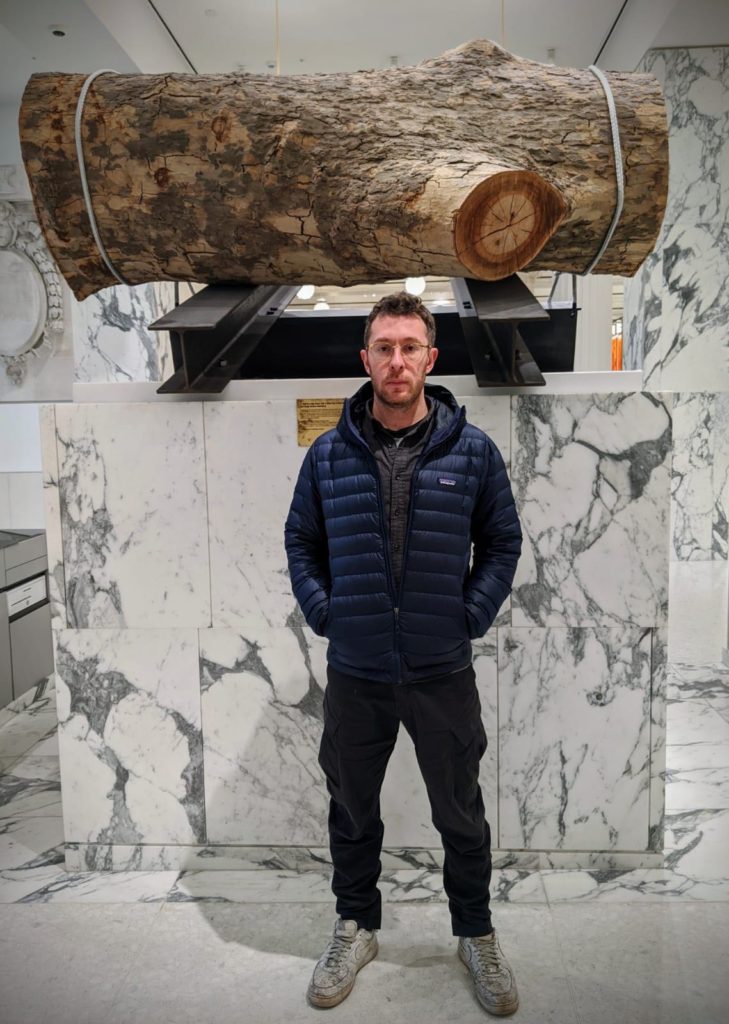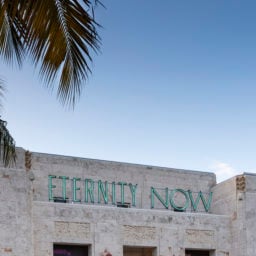As Miami Beach teeters on the knife’s edge of the climate disaster, it’s becoming harder for the attendees of Art Basel to ignore the harsh reality facing the coastal city. And that’s precisely the goal of the global climate-justice advocacy group Extinction Rebellion, which is planning to stage several actions in Miami this week targeted at the wealthy members of the cultural elite jetting in and out of town for the fair.
Activist William Skeaping, co-editor of the Extinction Rebellion handbook This Is Not A Drill and a founding member of the organization Culture Declares Emergency, also happens to comes from a background in art history. This summer, he was at the table with Antony Gormley, Cornelia Parker, and Mark Wallinger during a discussion that led the Tate Modern to declare a “climate emergency.” He was also on a panel at Frieze London this fall with Serpentine curator Lucia Pietroiusti to discuss the paradox of legacy building in a world beset with climate change.
The day I spoke to Skeaping, the BBC had published an article suggesting that several key tipping points in global warming may be reached much sooner than previously thought. So what is it going to take for the art world to reach its own tipping point when it comes to addressing climate change? Skeaping discussed why the industry needs to imminently change course, and why Art Basel holding a panel discussion on climate change just isn’t enough.
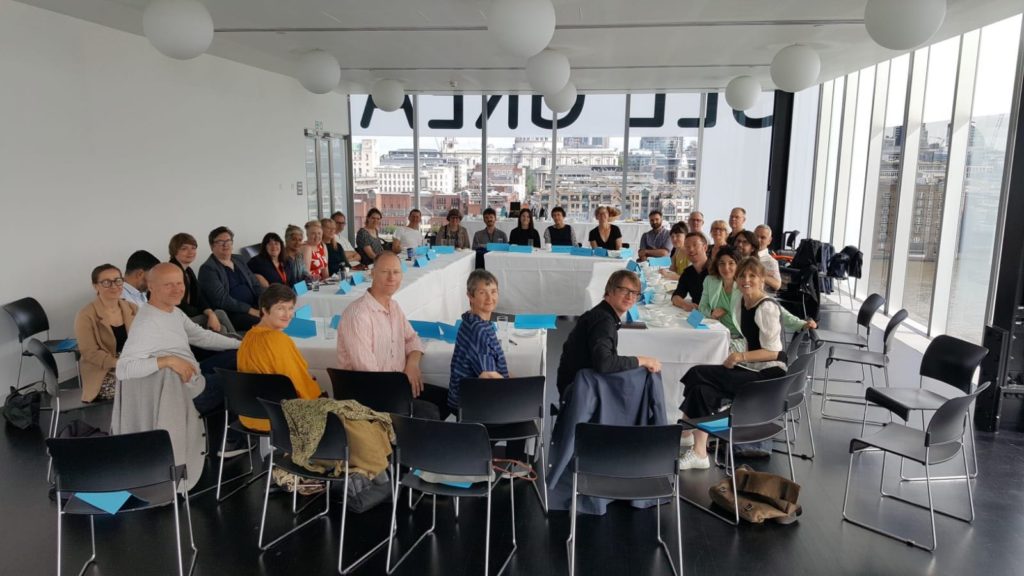
Culture Declares Emergency Meeting with France Morris and Tate Modern’s team, as well as artists Antony Gormley, Mark Wallinger, Cornelia Parker, and Gary Hume, among others.
Tell me why Extinction Rebellion is interested in targeting the art industry in particular.
If we are not doing this for the art, what are we doing it for? The people with the power are those who can afford to collect artworks worth millions of dollars—we are not naive about where that power lies and where it comes from. We are not trying to smash the system or destroy anything, we are trying to get people to work together and challenge business-as-usual, while there is still time. We need to bring intergenerational and indigenous voices on climate justice into the fold, but then we need to act on these things. The talking is done, it is time for action. This is not an Olafur Eliasson stunt.
You have an art history degree and are, in some respects, one of Extinction Rebellion’s art experts. What is your reaction to events like Art Basel Miami Beach?
The art world represents the massive inequality that has, in many ways, led to this situation. People are flying in to Miami on private jets to buy art in a region that is on the frontlines of climate change. How are we promoting and allowing this insane global circus to continue? All these people with art collections and new foundations in Miami are actually threatened by the people who come to visit them—the loop is completely unsustainable. If business-as-usual is taking place, then the art world is buoyant. When it comes to the commercial art world, we are challenging that business-as-usual approach.
What would you like to see done differently?
This cannot be a conversation about whether you serve vegan food in your canteen or whether you use plastic bottles—that is the lowest hanging fruit. Organizations like Art Basel have the power to influence all of its subsidiaries. Art fairs are amazing places to speak to power, because there you can catch the ear of celebrities, thousands of visitors, and hundreds of galleries. Talking about plastic water bottles is not enough. Extinction Rebellion wants to help these institutions use their platforms to help people in this crucial moment in human history, and we expect to see a proactive approach from Art Basel Miami Beach to address these concerns. If we don’t, that will be the kind of trigger we need.
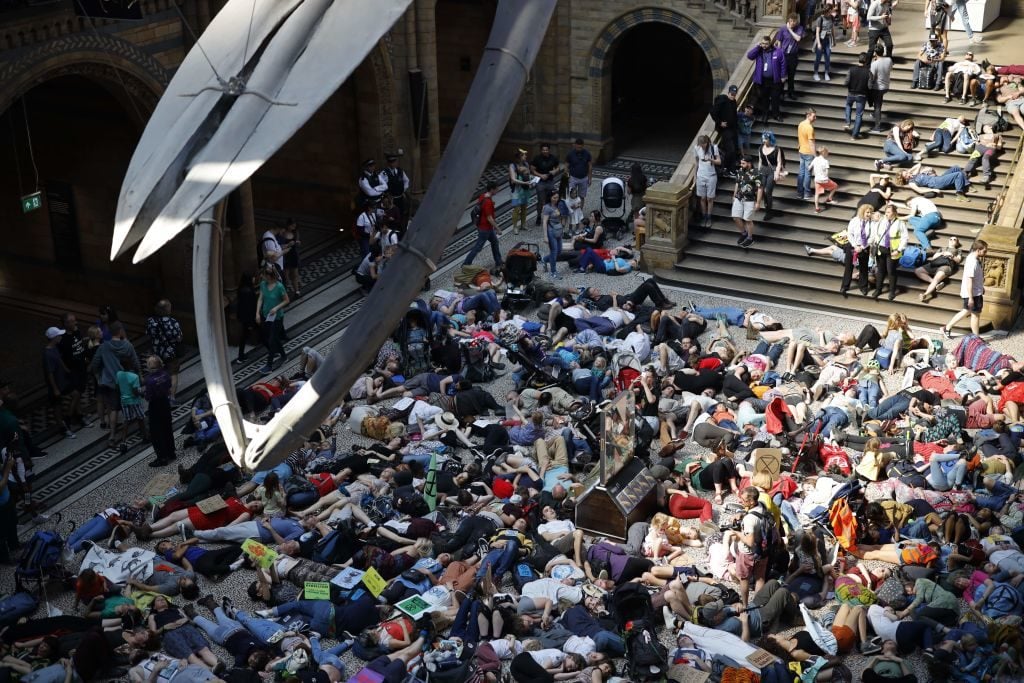
Extinction Rebellion climate change activists perform a mass “die in” under the blue whale in the foyer of the Natural History Museum in London on April 22, 2019. Photo by TOLGA AKMEN/AFP via Getty Images.
Many art institutions and collectors are in coastal cities like Miami, Los Angeles, and New York that are under threat.
When people put together an art collection, what do they hope will be seen in the future? If we don’t cope with this, will these legacy collections that are supposed to live on and define your tastes for years to come be seen as toxic if they do not address the global ecological crisis? How are the most powerful people in the world, those who can afford to generate buildings and stock them full of priceless works of art, not deeply invested in the legacy of their value?
We should also be discussing Gen-Z audiences, that generation of future collectors who will be looking at these works in future museums in Miami. What are they going to think about the art that is being made right now, these depositories of willful ignorance? People in the art world, including artists, who have not joined this conversation are ignoring a huge elephant in the room. There is going to be a swathe of late capitalist works ignoring this issue that are going to be rendered completely irrelevant in the near future. We are going to have to look back at this monstrous moment of wanton and intentional denial.
Art Basel Miami Beach is hosting a panel called “Confronting Climate Change Denial” this weekend as a part of its Conversations series. What is your response to that?
It’s a bit of a tokenizing thing to do, like having a panel on diversity in a box in a corner, another focused on dodgy funding for museums in a box in another corner. These panels discussions are where you hide stuff that you know you have to deal with, but that you don’t really want to want to engage with because it disrupts the flow of business-as-usual.
These issues, like the climate crisis, are not events to be held or nouns to be coined. Rather, they are a lens that we need to look through the world with. The climate emergency cannot be put into a tick-the-box panel with a celebrity guest, a best-selling author, and someone from the local community. Demonstrate through action, not through words. The panel discussion is around climate change denial, which is a big problem in the US. At this point though, do we continue to discuss with [climate change deniers] whether it’s real or not, or do we now just start taking action?
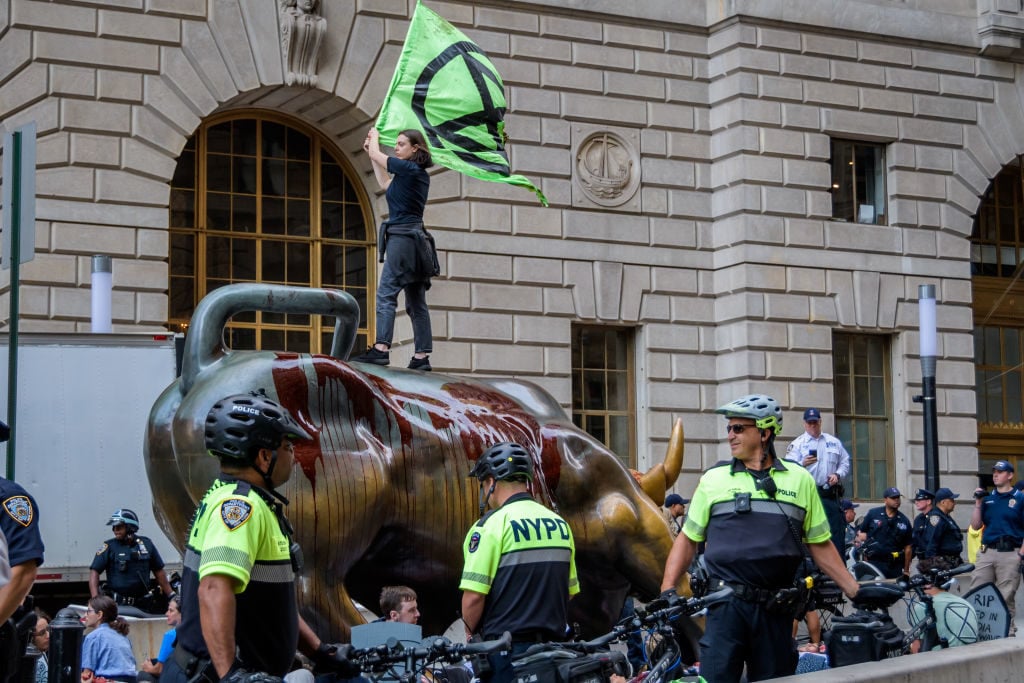
An Extinction Rebellion protester stands on top of the Wall Street Bull. Photo: Erik McGregor/LightRocket via Getty Images.
What do you think of the view that wealthy figures like art collectors, who are often from the global north, have had a latent response to the climate crisis?
It is due time for the people at the top to recognize where their duty is in this. This is simply about shared responsibility and climate justice. The art world is a scene where people will throw a dinner at a whim for a budding artist. Where are the dinners for the climate, so to speak? The philanthropic money that is currently being funneled to feed soft power and self-indulgence could be funding climate activism. The Amazon forest was burning down as the Frieze art fair was taking place. How bad does it have to get? What will the tipping point for the art world be to embrace and face the biggest threat to its value system, its heritage, and its very existence? We need to value our planet the way we value our art.

Extinction Rebellion activists in red costume attend a mass “die in” in the main hall of the Natural History Museum in London. Photo: Tolga Akmen/AFP via Getty Images.
That’s a real pain point, the deep hypocrisy between the values portrayed by art world discourses compared to the values portrayed by actions (or inaction).
The art world almost co-opts the values of humanity, diversity, compassion. These are themes that are buzzy as hell in the art world. But we have got to look at the bigger picture. The structure is not fit for purpose, and culture is not an indulgence. You cannot hang a piece by Kara Walker in your house and have that reflect, somehow, on your business practices, for example.
Indeed, if this is about culture, all of human culture—museums, artifacts, and all the 5,000 years of interesting creations we hold, as well as new works—it’s all going in the trash as soon as the food runs out. As society begins to decline and break down in the face of imminent effects of climate change and ecological collapse, then we are going to have to ask ourselves what the actual purpose of the arts is.
Extinction Rebellion held a talk and an action at Frieze London this fall. Can you tell me a bit about how it was received?
During Frieze London, members of Extinction Rebellion invited collectors and other VIPs to walk through Regent’s Park to get from Frieze London to Frieze Masters, as opposed to taking the available BMW cars. During the walk, we discussed the climate emergency. What you realize is that this has not become a part of the conversation among the wealthy collectors.
There is no thought leadership in the art world on this issue. We’re encouraging the Zwirners, the White Cubes, and the Hauser and Wirths of the art world to get together and figure out how they are going to radically transition to carbon-net-zero emissions or, at the very least, an immediate drop in their carbon emissions.
